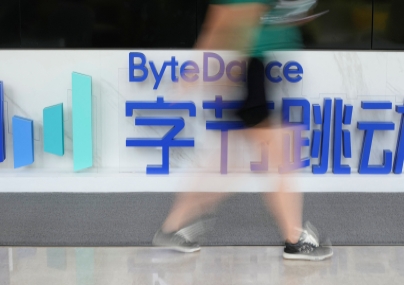
As China’s local governments grapple with a huge debt hangover, one solution they are now pursuing is public-private partnerships or PPPs. But will it be effective? Shangjing Li finds out more.
China’s local governments today are grappling with mounting debt, something that has been on a steady upward march since four trillion yuan ($645 billion) was sanctioned in the stimulus plan of 2008. And the panacea that it is pursuing is an unprecedented level of cooperation between government and private sector.
And this cooperation is being attempted through public-private partnerships, or PPPs. In May, China’s state planning agency released a list of more than 1,000 proposed projects totaling 1.97 trillion yuan ($317.75 billion) that are seeking private investors to help fund, build and operate them.
The National Development and Reform Commission has earmarked 1,043 public projects across the country, ranging from transport and water conservancy to environmental protection as PPPs.
“There is no doubt that China has the most PPP projects in the world at the moment,” says Li Kaimeng, director of the research center at the China International Engineering Consulting Corporation.
PPPs are long-term partnerships between governments and private companies on projects that are mainly funded and operated by the latter and supervised by the former.
By inviting private investors to participate in government-backed infrastructure projects, the PPP model is in line with Beijing’s vow to increase the power of the market, temper the economic slowdown and alleviate the debt of local governments.
The country has also designated 12 of the 1,043 projects as pilot schemes, which will help in perfecting policies over the next two years.
Back to topTWO SETS OF GUIDELINES
The PPP model was first used by the Chinese government in the 1980s, but it is only recently that the government is providing a full-scale impetus.
But currently some confusion around PPPs exists, after both the Ministry of Finance, and the National Development and Reform Commission (NDRC) released separate (and inconsistent) PPP guidelines on the same day in December. To make matters worse, both entities issued even more guidelines earlier this year, increasing the sense of confusion among participants in PPP projects.
“The Ministry of Finance has the most motivation because PPP projects help resolve the issue of local government debt. But the NDRC is ultimately in charge of approving projects,” says Jason Liu, a partner at JunHe, explaining why there are overlapping guidelines from two of the most powerful government branches. “PPP are still projects.”
The latest official data shows that as of mid-2013, local-government debt stood at 17.9 trillion yuan or $2.89 trillion, up from a negligible amount six years earlier. Much of the debt was racked up by a massive four trilllion yuan ($645 billion) stimulus push in the 2008 financial crisis.
The Ministry of Finance has done more concrete work to tackle the debt issue by advancing PPP projects. Besides founding a PPP center, it has hired UK law firm Pinsent Masons along with PwC as outside consultants, according to industry insiders. Additionally, the guidelines it issued are more detailed, comprising of some 60,000 Chinese characters. In comparison, the NDRC document only has 10,000 characters.
“Last year, it was not clear which government branch would take a dominant role, and so there was a little bit of tension between the ministry and the NDRC. But after these concrete steps taken by the ministry, it has the leading position,” Liu adds.
Despite the separate documents issued by the two government branches, lawyers interviewed by ALB agree that the overall aim from the government side is very consistent. It wants to promote the concept of a cooperative relationship between governments and companies, so they can share risk and returns.
Still, guidelines and provisions are not law. And a law for the PPP sector is not even close to being drafted due to its complexity and the many parties’ interests involved.
“PPP projects are usually complicated. They involve the process of setup, planning, choosing sites, environmental protection, budget management and so on, entailing the support and coordination of many government agencies. Drafting an uniform legislation is hard, and will take a long time,” says Laura Zhou, a partner at Zhong Lun Law Firm.
Back to topPPP THE CHINESE WAY
The concept of PPP derives from the United Kingdom in the 1980s. The core purpose of PPP, according to Li from the China International Engineering Consulting Corporation, is to maximise public interest through a long-term strategic partnership between the public and private sectors.
“But in China, we don’t care about partnership. All we care about is bringing in capital, and kicking off the project. Nobody really cares about how the partnership should be sustained over the 20 years following the signing of the agreement,” Li adds.
The Chinese government has even redefined the term “private,” ensuring that the definition of PPP here is much broader than that used abroad. Regulations from the Ministry of Finance say that private investors can actually be state-owned companies as long as they are not controlled by the local government.
“The very concept of PPP includes the “fighting” process between the public and private sectors, thus maximising the efficiency. But does this essential part exist in our country, in our tradition, or in our system? I think even if it exists, it would be in rare cases,” Li adds. “This is PPP with Chinese characteristics.”
Local government financing platforms, which are at the center of Beijing’s plan to reduce debt by moving it around, are becoming active players in the PPP sector in the hopes of accomplishing a business transformation.
Li says redefining the word “private” is fine, as long as the “private” party is independent from the local government. Right now, “private” parties can be private companies, foreign companies, listed companies, and even large SOEs, since Beijing-based SOEs usually do not listen to local governments.
But now his concern is that the line is getting blurred by permitting local government financing platforms to act as the “private” party. “If this is the case, I thinking it is the government partnering with the government,” he says.
Documents that have been released on current PPP projects indicate that local government companies and central SOEs are the main players, whereas private investors are playing a negligible role.
While SOEs are showing interest in the model, private investors are still reticent to commit. This is partly because in previous cases, some local governments did not keep their end of the contract, hurting the interests of private investors. Though the new PPP rules have granted equal partnership status to local governments and investors, the trust hasn’t been rebuilt just yet.
“In the first round of PPP projects, it is a very clear that central SOEs are forming alliances with local government. First, it is because local governments trust central SOEs, as it is politically safe given the ongoing corruption crackdown. Second, central SOEs have lower funding costs, since they have a better appetite for risk. Lastly it is because central SOEs are really rich,” says Liu.
Besides redefining the word “private,” another Chinese characteristic is the massive number. China has thousands of ongoing PPP projects, whereas in all the other developed countries, including the UK, the country from which the PPP model originates, has only a few dozen, making up at most 10 percent to 20 percent of all public projects.
Even though most local government don’t really understand how PPP projects function, they actively push forward because they are hugely indebted and don’t have a choice.
Li voices his concern that local government officials are very likely to be shortsighted when it comes to PPP projects, since they are only looking to resolve debt issues and improve their political records. He emphasizes that the government should be well aware of the fact that PPPs will increase government expenditures as well, since investors will seek returns.
“A lot of projects are not suitable for the PPP model, so we should not be overdoing it,” Li adds. “Market-oriented reform should be our long-term objective instead of pursing PPPs.”
Back to top


